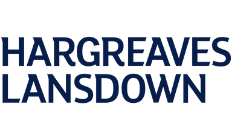Hargreaves Lansdown Active Savings review
Find out how the Active Savings product from Hargreaves Lansdown works and how you can use it to manage several savings accounts in one place.


Hargreaves Lansdown may be primarily known as an investment management platform, but you can also put cash into a savings account using its “Active Savings” product.
Hargreaves Lansdown offers a product called Active Savings, which allows you to choose between several savings accounts in one platform. These accounts are offered by other banks that are partnering with Hargreaves Lansdown. Using Active Savings, you can move your money between these accounts effortlessly, without having to complete a lengthy application process each time.
Each banking partner has Financial Services Compensation Scheme (FSCS) cover up to £85,000. That means that if that the bank or building society holding your funds goes bust, the FSCS promises to compensate you up to that limit.
Hargreaves Lansdown doesn’t charge its Active Savings customers. Instead, it charges its partnering banks. This may mean the interest rates offered are lower than what you’d get by opening an account with the banks directly.
At the moment, the platform offers cash ISAs, instant access accounts, limited access accounts and accounts with fixed terms of up to five years to choose from. There are Sharia-compliant accounts available too.
You can apply to open an Active Savings account via the Hargreaves Lansdown website. To apply, you’ll need to share some basic personal and financial details. You’ll also have to nominate the current account you want to make deposits from.
If you already have a Hargreaves Lansdown investment account, there’s no need to fill out a separate application. Just head to the Active Savings tab on the Hargreaves Lansdown website.
Once your account has been created, you’ll make a deposit from your nominated current account into Hargreaves Lansdown’s “cash hub”. This is essentially a holding account, from which you can transfer your savings to any of Hargreaves Lansdown’s partner accounts.
To withdraw your savings or move it to another account, you’ll first have to transfer it back into the “cash hub”. Funds will earn 0% interest in the “cash hub”, so there’s no benefit to keeping money there for too long.
| Email support | |
|---|---|
| Telephone support | |
| In-app or live chat | |
| Contact form | |
| Branch support |
This product gives you the flexibility to easily move your money to a savings account with a better rate.
However, you’ll often receive a lower interest rate compared to what you’d get by applying directly with the partnering banks.
If you’re happy to sacrifice some interest for this added convenience, you’ll be pleased with Hargreaves Lansdown’s Active Savings product.
Our research found that 41% of Brits work from home at least some of the time as of March 2025. We look at who is working from home and how working from home affects productivity.
We look at the definition of compound interest, what it concretely means and how you can use it to grow your savings more quickly.
Learn how offshore savings accounts work, which taxes you need to pay and how to score the best deal.
Whatever you’re saving for, find the right Halifax savings account for you. Our detailed guide walks you through which of Halifax’s savings accounts is for you.
Learn about the savings options at Tesco Bank, from ISAs to fixed rate savings. We highlight Tesco Bank savings accounts’ features and pros and cons.
Our guide to Santander’s savings accounts. From ISAs to regular savings, from fixed-term to junior saving accounts, Santander might have the option for you.
Yorkshire Building Society offers a range of savings accounts. If you’re looking to save, see our guide for more.
Nationwide’s savings account options explained. Whether you’re happy to tie up your money or need instant access, we’ve covered the options.
Read about the Post Office and the savings accounts they offer. Find out more about the services Post Office Money provide, and see if they are right for you.
Whatever you’re saving for, big or small, Barclays Bank offers a full range of savings accounts. Our guide takes you through the full range.